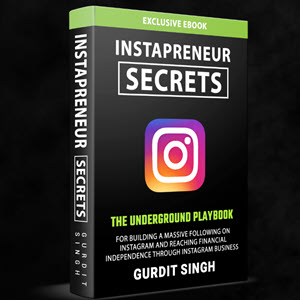Marketing On Google

Even though there are 19 social networks that are bigger than Google+ and even though traffic to the new socnet is not exactly soaring, something tells me that this is The One, from Google; this won’t go the way of Google Buzz, or Orkut (big in Brazil!). There has been enough positive traction for Larry Page & Co. to lay down their markers.
That means we need to take it seriously. Let’s always remember, Google is the lead-dog in search; it owns YouTube (the second-most used search engine!); it is already connected to millions via Gmail, Google Reader, Google Places, Google Maps, etc.
Woven together, it’s pretty darned compelling. Google is not to be trifled with: success within this ecosystem is important.
As a consultant to marketing chiefs, I have already heard the world-weary sighs. “ANOTHER one? We are only just now getting our act together on Twitter, Facebook, LinkedIn and YouTube (etc.) … Now I gotta get smart on this? I gotta have an answer for the CEO about how we’ll ‘own’ Google+?”
It’s actually good news that Google has limited brand involvement on its socnet to a handful of “test cases” like Ford. We can all watch and learn from their innovations (and mistakes). This gives us some breathing room. Room to consider such things as:
The Role of the +1 in SEO. According to SearchEngineLand: “Google has previously said that gaining +1s can help improve your ranking for those who have directly +1ed your content, as well as for those they are connected to. In addition, it can show even those who aren’t connected or using +1 an overall count for your page, should it appear for them naturally.” In other words, make sure you add the +1 functionality to your owned web content.
The Role of Google+ Circles in Brands’ SEO. As mentioned in Danny Sullivan’s article above, “being a brand on Google+ will mean people can make a direct connection to you, and that’s going to result in an increased chance that you’ll rank better for those people, when they’re logged in (to their Google accounts).”
In other words, the direct linkage to a brand in Google+ will guarantee the brand’s visibility to the user whenever they run a relevant search, whereas when that linkage does not exist (or they are not signed in), the SEO results will be quite different. Users will be giving permission to Google to boost their favored brands’ SEO vs. what would have presumably been neutral search results in the past. That’s pretty wild. More interestingly, people “forget” they are signed in to Google and will assume that that brand’s awesome SEO is “natural” not “gamed.”
Hangouts, Sparks & Streams, Oh My. There are some pretty cool features included in Google+.
Hangouts, which allows you to conduct a videoconference on the fly with up to 10 people, could offer brands a way to interact very directly and compellingly with handfuls of users, especially influencer types. Imagine if Ford decided to show-off its Auto Show concept cars, to 10 influential twitterati and/or journos at a time, via Hangouts.
Streams are very much akin to the Facebook Newsfeed. This is cool in that we will be able to create editorial calendars and conduct community management using best practices developed on Facebook. So we’ll be shooting for (and measuring) engagement. Here’s a fascinating thought: Facebook’s Walls/Newsfeeds are currently blocked from Google; so, will the content that appears within the Streams of G+ be discoverable via the search engine, and contribute long-term to SEO?? That factor alone could be a game changer.
Sparks are a little loosey-goosey right now, it seems to me. What may be of interest to PR pros is to keep tabs on which journals seem to crop up the most on Google+ Sparks… if there are some obvious picks, maybe those media sources will deserve higher-priority for pitches?
Who’s The Target? Lastly (for now), if you’re a marketer considering a future campaign on Google+, it’s important to remember who’s there. Members thus far tend to be highly-networked early adopter types. Your mom ain’t there. Impressing those influencers requires a strong creative approach in terms of content and outreach. But if you do impress them, that success is likely to be amplified more than it might be on Facebook or Twitter — especially to the media, in these early days when all eyes are on G+.
What do you think? Did I tell you anything you didn’t already consider? What am I not considering? (To get you started, be sure to also read what David Armano’s thinking about re: Google+ at L+E. Oh, and wish him a happy birthday while you’re at it!)
Now, +1 this post, wouldja?
Continue reading here: “Hypermicro” Public Relations
Was this article helpful?


